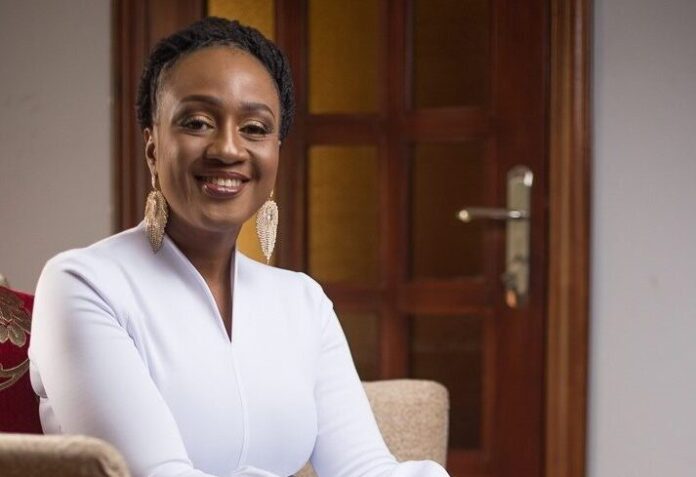I have always wondered what it is about speaking to large groups of people that frightens people when beneath our fear of public speaking, what we truly desire is to communicate effectively. Successful people – leaders, managers, high-level executives, and everyone else we look to for mentorship – have been through some stages of fear and fright in communication.
What most people are afraid of when communicating is to the fear of judgement and ridicule. They have either presumed that the worst will happen even before they have shared their thoughts, or they have anticipated a repetition of an a past event where they were mocked in public while speaking.
But as Franklin Delano Roosevelt said, “The only thing we have to fear is fear itself.” because it is the biggest obstacle in our way while we are trying to better ourselves in work, life and love spaces. Before becoming a high-performance coach, I struggled immensely with basic communication and public speaking. Today, I can comfortably speak to a room filled with thousands of people because of key tips that I have consistently practiced over the years. In this article, I will share some of them with you.
Let’s begin by understanding what it means to communicate. In my research, I discovered that the word “communication” originated from the Latin word, communis. Lunenberg (2010) further assets that the word means ‘common’, which suggests that there must be a common understanding of the message between the source and the receiver concerning the message being communicated. Being an effective communicator means being able to both actively listen and clearly express yourself to those around you. Unfortunately, there is no one skill or technique that will make you a better communicator. Effective communication requires a diverse skillset that covers both verbal and nonverbal communication cues, as well as close listening (Masterclass, 2020).
Many of us make the mistake of speaking words without connecting with our audiences. The Institute of Public Speaking highlights the essence of storytelling as a tool that can be a powerful & compelling for today’s leaders and public speakers because stories can breathe life into our communication. Another way by which we can build a bridge of connection is through verbal or visual signals. With our eyes, body movement and tone of voice, we may either align our audience with what we are saying or repel them. So far, I have spoken about communication as a single route of the speaker passing on information to the receiver. However, effective communication is a full circle of exchange. What this means is that, as we communicate, we must create room to receive responses and feedback from our audience. “Feedback is very important in the communication process as it distinguishes communication from information. When there is feedback, the communication process is complete, making it meaningful” (Fatimayin, 2018).
What is the essence of effective communication in leadership? Effective communication impacts more than just the bottom line of your business. If building community is at all important to you, knowing the ABCs of communication can help you to build a community that shares in your vision and with whom you can build trust. “Effective communication is vital to align efforts in the pursuit of goals and inspire positive change. When communication is lacking, important information can be misinterpreted, causing relationships to suffer and, ultimately, creating barriers that hinder progress” (HBR, 2019).
According to a report from the Economist Intelligence Unit (pdf), poor communication can lead to low morale, missed performance goals, and even lost sales. A separate study found that inadequate communication can cost large companies an average of $64.2 million per year, while smaller organizations are at risk of losing $420,000 annually.
One of the smartest ways to become excellent at a craft is to identify people who have been successful on a similar journey and learn from their experiences. Further below, I have identified some of the world’s best communicators and discussed some pointers we can learn from them.
- Oprah Winfrey has taught the power of listening when it comes to communication. The key to building a ground of commonality to is to listen and understand the stories of your audience and speak those stories back to them in an honest manner. When you speak and a person feels like you understand them, you have won their attention and their hearts. Many of us make the mistake of spotlighting ourselves so much when speaking. But of the secrets of great communicators is their ability to empathise and tell a story that makes the listener feel seen and heard.
- Nelson Mandela, the speaker that inspired hope, brought an inspiring energy to any room he stepped into. His authenticity and truth were a great deal of importance to why he had so much influence. Authenticity is the gateway to forging an emotional connection with one’s audience.
- Winston Churchill is one of the most oft-quoted leaders of the 20th century. During a dark stage in history, he gave people hope and helped them be resilient and strong. Through memorable quotes. Churchill’s quotes are short and to the point. He understood that people are more likely to remember a short but powerful message than a lengthy but lame one.
Here are 4 keys to help you communicate with confidence irrespective of the size of the crowd:
- Preparation: When it comes to preparation, consider two key things. Prior to stepping up the stage, prepare your visibility (how you look) and your vocality (how you sound). Know exactly what you will wear days before the event of speaking. Rushing on the day of the event to figure out what you should wear can wear you out even before you step up the stage. Remember to wear something that makes you feel comfortable and confident. The other half is to practice your message by recording yourself speaking on your message. Listen to your message and the tone of your voice. Do this repeatedly to identify areas that you can improve and to get comfortable with hearing yourself. Inspiring presentations take practice—hours and hours of it. No one sees the hours of practice, but if you do it right, the excellent outcome will speak for itself.
- Positioning: One of the most common things to hear is this, “I get anxious when I have to speak to an audience.” Positioning your thoughts is important before speaking. Decide the main pointers you’d like to speak on and think on how you’d like to develop those points. Plan to speak in a chronological way such that you and your audience can understand and follow. Keep your points to a maximum of 4 so as not to lose the attention of your audience. Irrespective of the field of industry you are in, this will apply.
- Posture: This is not just about how you stand. Posture is about aligning the way you stand with your thoughts and words. The word posture comes from the Latin verb ponere, which means to ” to put in place”. Posture refers to the position of the human body and its orientation (Britnell, 2005). Land on your thoughts and deliver your posture. Remember that your posture is also a form of communication. When you are delivering a thought that you want your audience to take away with them, follow it through with a posture that emphasizes the message.
- Perfection is not achievable: As you prepare to speak, do not prepare for perfection. Rather, prepare for the moments of imperfection. As you communicate authentically, you are likely to make mistakes. And as you become vulnerable, you may be challenged to the point of quitting. These are the vital moments that you should prepare for. How can you quickly bounce back when you have made a mistake? What should you do when you have jumbled up some pointers or forgotten them? What can you do or say when your audience ridicule you because you spoke on something they do not agree with? A strong mindset that supports progress is very important here because our greatness lies not in our ability to be perfect but in our capacity to keep going against all odds.
In any contemporary work setting, effective communication skills is key. Any employee looking to get to the leadership level in the company or organization they work for but lacks communication skills will find it difficult to get to that desired level, as such workers are unable to grow. Communication is at the core of effective leadership. If you want to influence and inspire your team, you need to practice empathy and transparency, and understand how others perceive you, through your verbal and non-verbal cues.
To improve your communication skills and become a better leader, begin by assessing your effectiveness so you can identify areas for improvement. Then, set goals and hold yourself accountable by creating a leadership development plan to guide and track your progress.
To learn more about effective communication skills in a practical way, grab my new book “The Essentials of Image Leadership” where you will have a workbook to always refer to on your journey.
Are ready to stand out and lead your Image?
Read my book: “The Essentials of Image Leadership”.
Designed with practical exercises for home or office,
This book gives you all the essential tips and
Tools needed to sail with success in your image.
It also touches on dining etiquette,
Ensuring that in every space you find yourself,
You make a personal impact and achieve influence.










